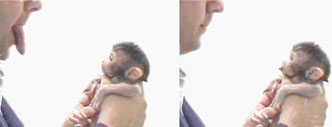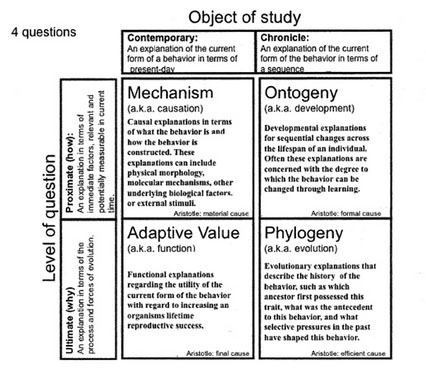Imitation in Primates
Biology 342 Fall 2014
Annelise Hill Yasemin Lopez
Introduction to Imitation:
Imitation in Primates: an ultimate and proximate view

Gross, Liza. A Newborn Macaque Imitates Tongue Protrusion. Digital image. PLOS Biology, 5 Sept. 2006.
Imitation:
Were you ever told as a child that “imitation is the best form of flattery” when complaining to a parent or teacher that someone was mimicking you? While being blatantly imitated can be very frustrating as a child, imitation is actually an important behavior in humans and monkeys. This statement relates to the chameleon effect: people who get along really well tend to imitate each others’ speech patterns and body language. This unintentional mimicking is your way of subconsciously increasing your likeability and making social interactions smoother for you (Paukner, 2009).
We will explore imitation in primates to get a better understanding of how imitation works and how it affects us. In this website we will be exploring the behavior through Nikolaas Tinbergen’s four questions: phylogeny, ontogeny, mechanism, and adaptive value, in order to have a broad understanding of imitation and its benefits to primates.

Figure 1. Deconstructs Tinbergen’s four questions through looking at the object of study as well as the level of question. Explains what mechanism, ontogeny, adaptive value, and phylogeny mean and what areas of study they look at.
Image from professor Suzy Renn (link)
Tinbergen and Primate Imitation:
Phylogeny: This page considers the evolutionary reasons for imitation and the development of the behavior in other species.
Ontogeny: This page explores the reasons for why development of imitation takes place and how it changes over an individuals’ lifetime.
Mechanism: This page looks at the brain pathways and the hormones that are thought to be involved in imitation. We hope to give a better understanding of where physiologically imitation comes from and how it works.
Adaptive value: This page looks at how imitation helps increase lifetime reproductive success in primates through adhesion of group living.